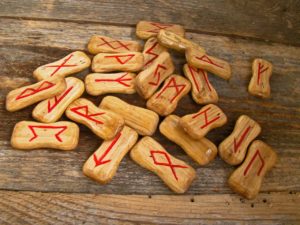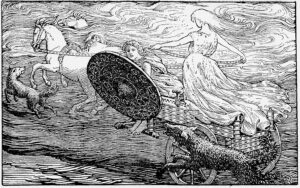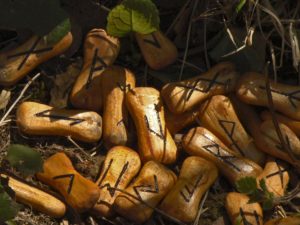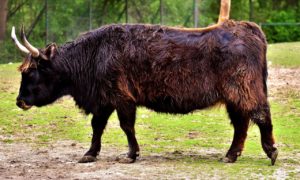The Elder Futhark: Sowilo or Sowelu
 Sowilo or Sowelu, also known as Sol or Sigel, is the sixteenth rune of the Elder Futhark, the oldest runic alphabet used by Germanic peoples. People associated this powerful rune with the sun, light, and clarity. Its name translates to “sun” or “wholeness,” and it represents a state of being complete and unified. In this blog post, we’ll explore the history and meaning of Sowelu, as well as its use in divination.
Sowilo or Sowelu, also known as Sol or Sigel, is the sixteenth rune of the Elder Futhark, the oldest runic alphabet used by Germanic peoples. People associated this powerful rune with the sun, light, and clarity. Its name translates to “sun” or “wholeness,” and it represents a state of being complete and unified. In this blog post, we’ll explore the history and meaning of Sowelu, as well as its use in divination.
Sowelu in Old Norse, Germanic, and Anglo-Saxon
 Sowelu was known by different names in different Germanic cultures. In Old Norse the Nordic peoples called it Sól, which means “sun.” In Germanic, it was known as Sigel, which translates to “victory.” And in Anglo-Saxon, those Germanic tribes called it Sigelc, which is also related to the concept of victory.
Sowelu was known by different names in different Germanic cultures. In Old Norse the Nordic peoples called it Sól, which means “sun.” In Germanic, it was known as Sigel, which translates to “victory.” And in Anglo-Saxon, those Germanic tribes called it Sigelc, which is also related to the concept of victory.
The Old Norse name for Sowilo, Sól, is particularly significant because the sun was an important symbol in Norse mythology. Our Northern ancestors believed the sun to be a goddess named Sól, who drove a chariot across the sky.
In Germanic cultures, the sun was also an important symbol of power and strength. The name Sigel reflects this association, as victory was seen as a manifestation of strength and power.
In Anglo-Saxon culture, people associated Sowilo with success and achievement. The name Sigelc comes from the Old English word “sigel,” which means “sun,” but it was also used to refer to a seal or stamp of approval. This suggests that people saw Sowelu as a symbol of success and recognition.
The Meaning of Sowelu
Sowilo is a rune of wholeness and completeness. It represents the idea of being unified, both within oneself and with the world around us. Sowelu is often associated with the sun, which is a symbol of clarity and illumination.
When Sowilo appears in a reading, it may suggest that the querent is on the right path towards achieving their goals. It may also indicate that the querent is feeling complete and unified within themselves. However, it is important to note that Sowelu can also represent a need for clarity and illumination. If the querent is feeling lost or unsure, Sowelu may be urging them to seek out the truth and find their way forward.
Divination with Sowelu
 Like all runes, Sowelu can be used for divination. There are a few different methods for reading runes, but one common method is to draw three runes and interpret them as past, present, and future.
Like all runes, Sowelu can be used for divination. There are a few different methods for reading runes, but one common method is to draw three runes and interpret them as past, present, and future.
If Sowelu appears in the past position, it may suggest that the querent has already achieved a sense of wholeness and completion in their life. It may also indicate that the querent has overcome obstacles in the past and is now in a position to move forward with confidence.
If Sowelu appears in the present position, it may suggest that the querent is currently feeling complete and unified within themselves. It may also indicate that the querent is on the right path towards achieving their goals.
If Sowelu appears in the future position, it may suggest that the querent will achieve a sense of wholeness and completion in the future. It may also indicate that the querent will be successful in their endeavors and will experience a sense of victory.
It is important to note that Sowelu is not always a positive rune. In some cases, it may represent a need for clarity and illumination, which could indicate that the querent is feeling lost or unsure. It is important to take the context of the reading into account and interpret Sowelu in light of the other runes that appear in the reading. By considering the other runes and the overall message of the reading, the querent can gain a deeper understanding of what Sowelu is trying to communicate.
Some Final Thoughts on Sowelu
Sowilo is a powerful rune that represents wholeness, unity, and clarity. The Germanic cultures associated Sowelu with the sun and victory, thus reflecting its importance where people highly valued strength and power. When used in divination, Sowelu can provide valuable insights into a person’s past, present, and future, but it is important to consider the context of the reading and interpret Sowelu in light of the other runes that appear. Whether seeking success, clarity, or a sense of completeness, Sowelu can offer guidance and support on the journey towards wholeness.
—
Did you know you can become my patron for as little as $5 a month? This entitles you to content not posted anywhere else. Plus you get to see posts like this three days before the public! Without patrons, I’d be having a very hard time keeping this blog going. Become a patron today!Become a Patron!
















 Uruz is an interesting rune to have in a cast because it is the symbol of vitality and strength. In many ways, it’s a positive rune to have, depending on where it is in the layout and what runes are surrounding it. If Uruz is in a place in the cast which is what obstacles you might face, then it can be an unwanted rune, because it may be saying that the forces against you achieving your goal are powerful and may be difficult, if not insurmountable, to overcome. But in many casts, it suggests a strong force helping you. But be careful, Uruz can bring about some pretty powerful changes that you might not foresee, and your life can become chaotic with such a rune at the helm.
Uruz is an interesting rune to have in a cast because it is the symbol of vitality and strength. In many ways, it’s a positive rune to have, depending on where it is in the layout and what runes are surrounding it. If Uruz is in a place in the cast which is what obstacles you might face, then it can be an unwanted rune, because it may be saying that the forces against you achieving your goal are powerful and may be difficult, if not insurmountable, to overcome. But in many casts, it suggests a strong force helping you. But be careful, Uruz can bring about some pretty powerful changes that you might not foresee, and your life can become chaotic with such a rune at the helm.